Here in Boulder we enjoy many remarkable acts of nature. Looking skyward often offers fantastic aerial phenomena, including these striking cloud formations...
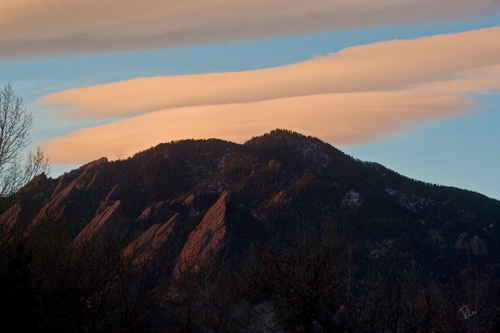
Dawn Skyshow Over The Boulder Flatirons on 12 Dec. 2010
Some could provide cover for UFO's...
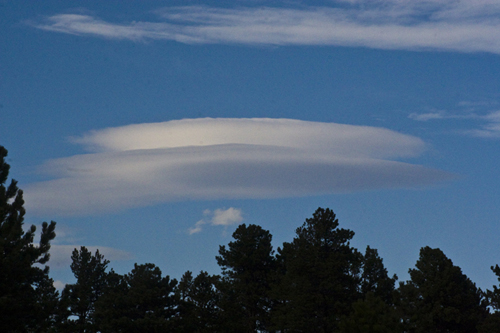
Extraterrestrial Visitors on 7 November 2009?
Since moving to the eastern slope of the Rocky Mountains I have enjoyed frequent sightings of these spectacular altocumulus standing lenticularis or lenticular cloud formations. Where stable moist air flows over a mountain or a range of mountains, a series of large-scale standing waves are formed on the downwind side. If the temperature at the crest of the wave drops to the dew point moisture in the air may condense to form lenticular clouds also sometimes known as "lee clouds," "wave clouds," "Clouds of Heaven," or "Angelships." As the moist air moves back down into the trough of the wave, the cloud may evaporate back into vapor...
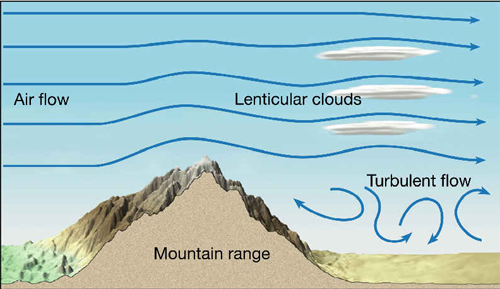
Lenticular Airflow Diagram (Courtesy City College NY)
Lenticular clouds are most common in areas with high winds and tall mountains. They are scientifically referred to as orographic formations from the Greek "oros," meaning "mountain." Lenticular clouds may also appear near elevated plateaus or high hills and occasionally near tall thunderclouds making our skies ideal for viewing their moist air magnificence. They have been photographed on every continent in the world, including Antarctica.
This phenomenon results in some amazing skyshows...
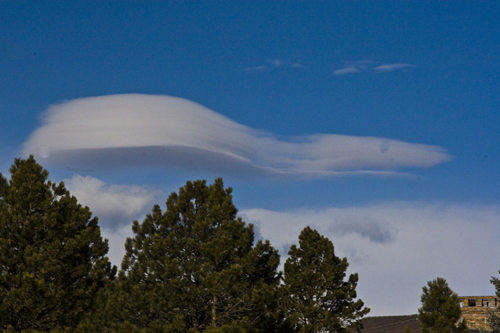
Waves In The Sky on 26 Jan 2010
These wild mountain waves can occur for over 100 miles past the mountain range and can exist up into the troposphere and down into the lower stratosphere. Pilots of powered aircraft tend to avoid flying near lenticular clouds because of the turbulence that accompany them but glider pilots actively seek out these "lennies." The precise location of the rising air mass is fairly easy to predict from the orientation of the clouds. "Wave lift" of this kind is often very smooth and strong, and enables sailplanes to soar to remarkable altitudes and great distances. The current gliding world records for both distance (over 3,000 km; 1,864 mi) and altitude (15,460 m; 50,721 ft) were set using such lift. The strong lift of a lennie was first discovered by a glider pilot, Wolf Hirth, in 1933. Gliding in a wave wind causes the aircraft to soar dramatically, and glider pilots often need to use pressure suits and have oxygen masks to help them breathe.
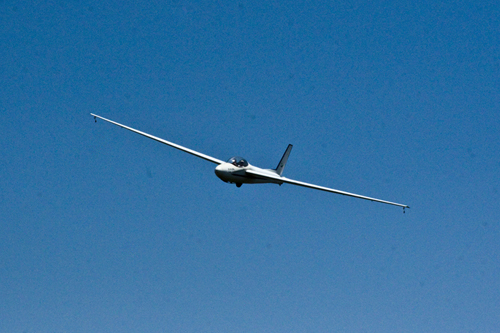
Mile High Gliding Pilot Searching for Lennies on 7 July 2007
There are three types of lenticular cloud formations depending on height:
-Stratocumulus Standing Lenticularis (SSL) are low-level clouds found at about 8,000 feet and have the lowest altitude of the three types. They are typically faster moving and less well-defined.
-Altocumulus Standing Lenticularis (ASL) are mid-level clouds that are the most common type of lenticularis, found between 8,000 and 20,000 feet. They appear very smooth and flat, often in multiple layers. In contrast to the other types, ASL tend to be stationary, despite the comparatively fast-moving wind at the same altitude. This is due to the wave nature of the wind, in which the wave peak remains stationary relative to the ground.
-Cirrocumulus Standing Lenticularis (CSL) are the rarest type of lenticularis, appearing at over 24,000 feet. They are so rare because there are very few geological structures at that altitude, which are required for lenticularis to form.
There have even been lenticular sightings on the downslopes of volcanoes on Mars!
Whether you are in Boulder or on Mars, keep your eyes on the skies and you may get a lenticular surprise.
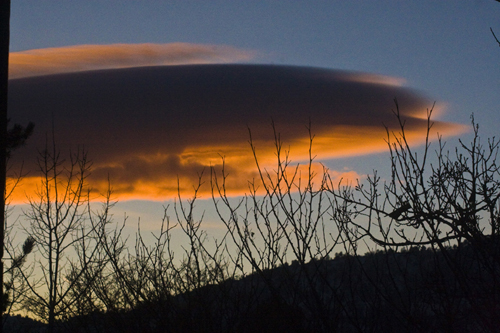
Boulder Sunset Lenticular on 4 Jan 2010